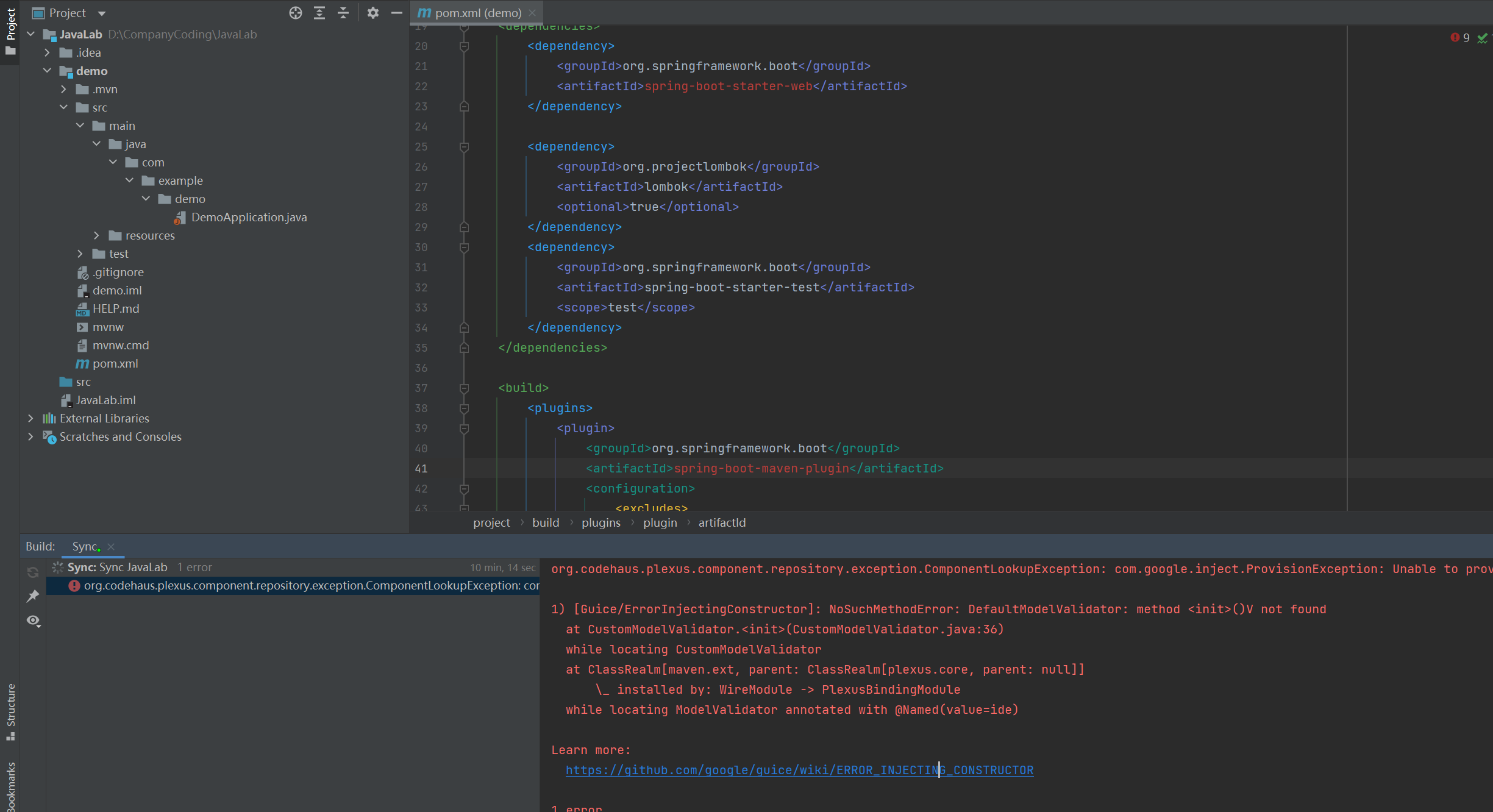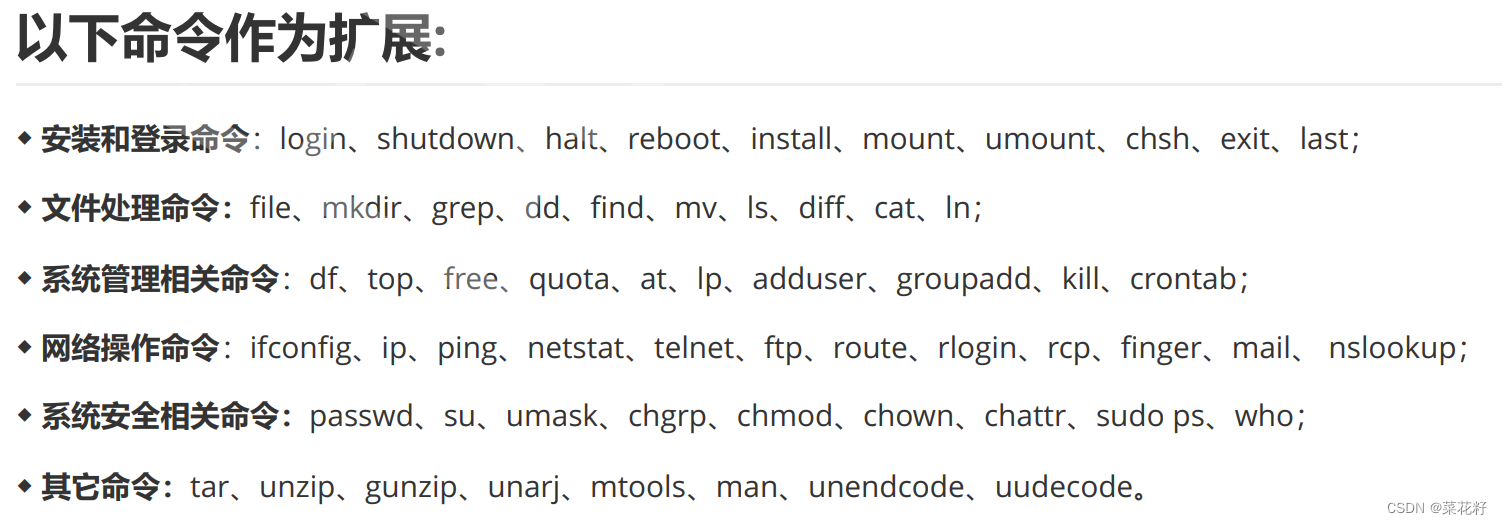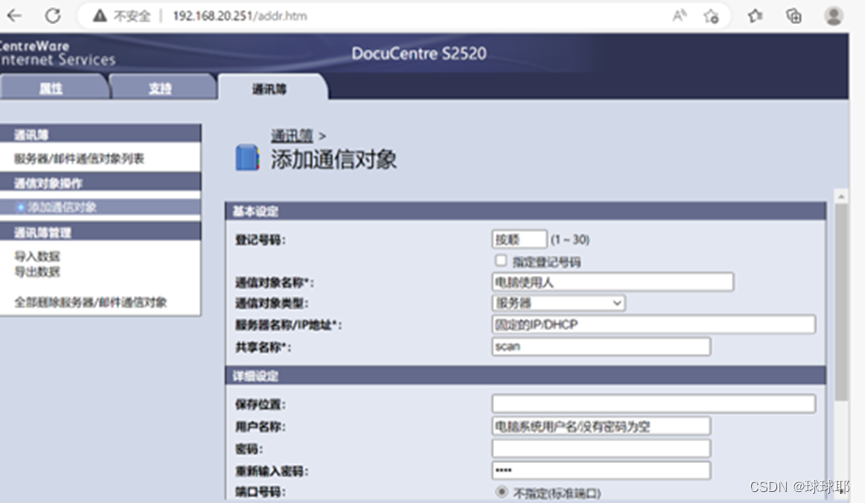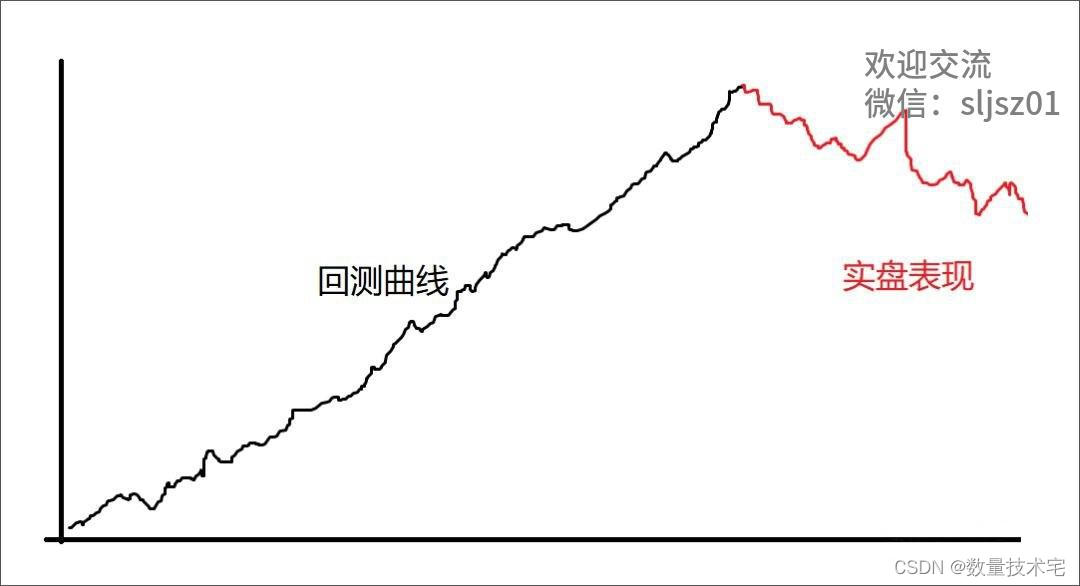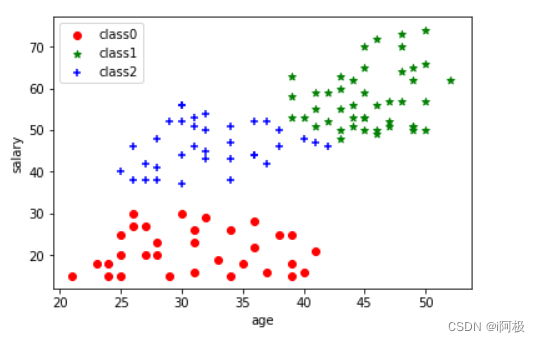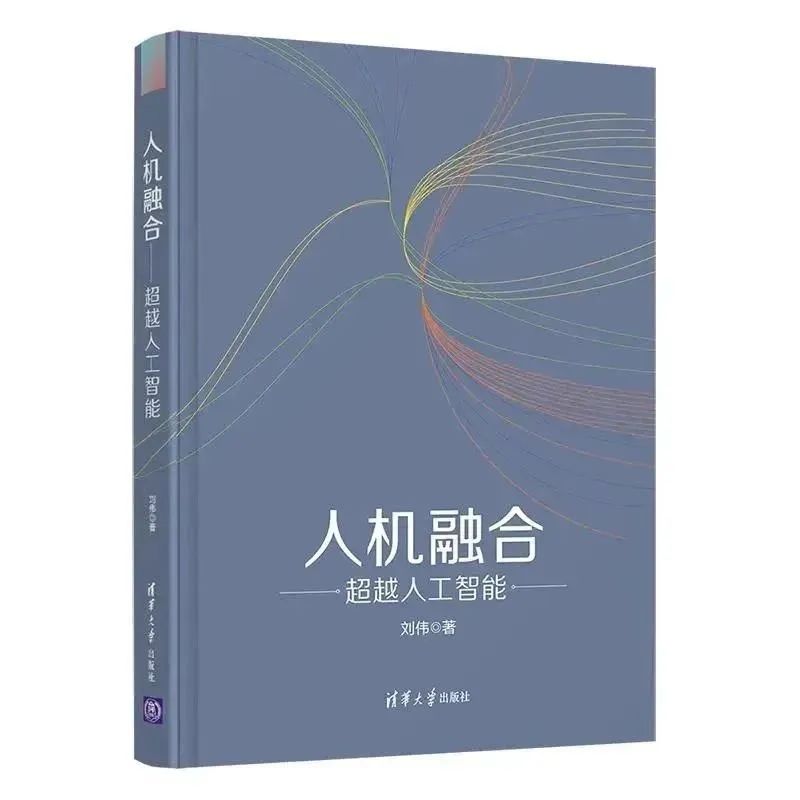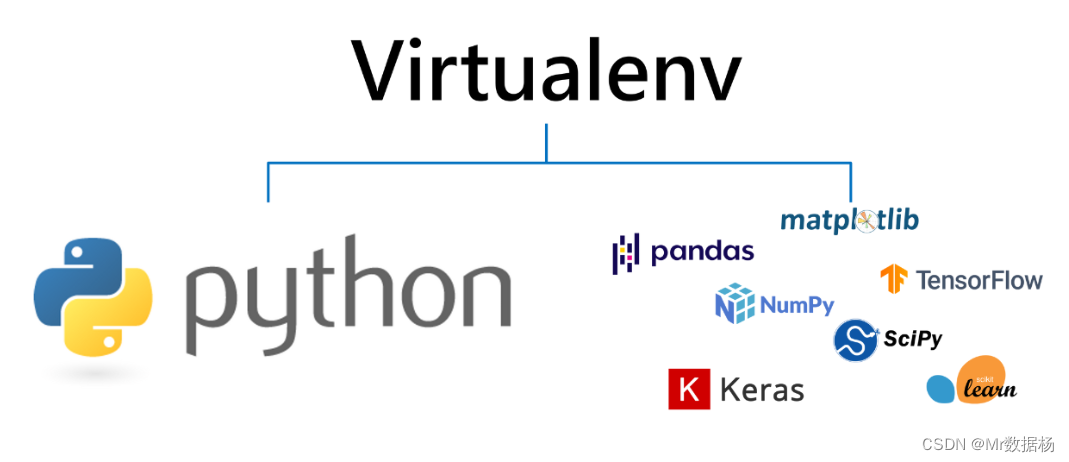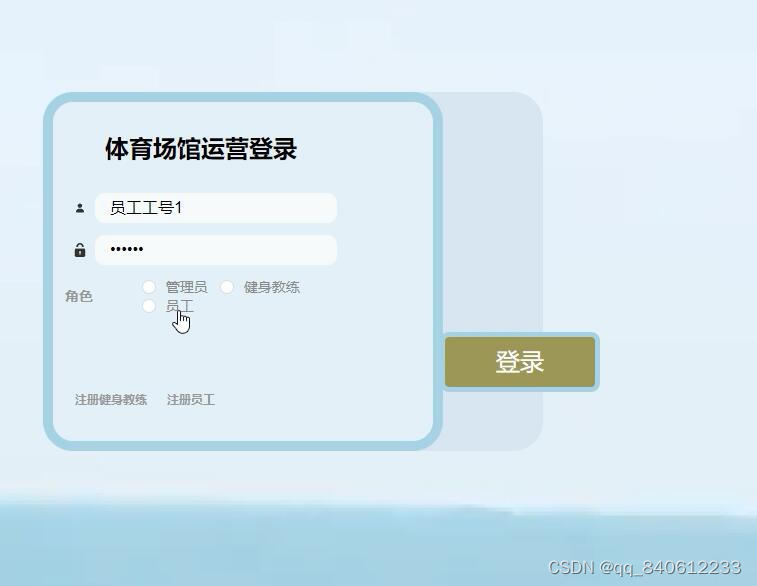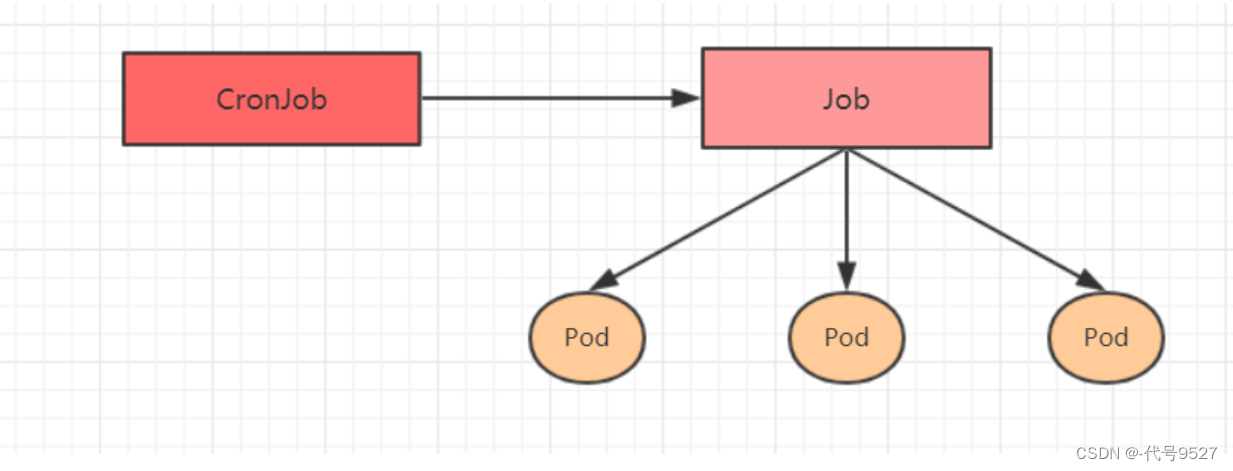作为关联式容器的一种,map 容器存储的都是 pair 对象,也就是用 pair 类模板创建的键值对。其中,各个键值对的键和值可以是任意数据类型,包括 C++基本数据类型(int、double 等)、使用结构体或类自定义的类型。(pair中第一个元素为key(键值),起到索引作用,第二个元素为value(实值)),所有元素都会根据元素的键值自动排序。
可以理解成python中的字典
map和multimap区别:
map<T1, T2> mp; //map默认构造函数:
map(const map &mp); //拷贝构造函数 map不允许容器中有重复key值元素
multimap允许容器中有重复key值元素
目录
map构造和赋值
map大小和交换
map插入和删除
map查找和统计
map容器排序
map构造和赋值
构造:
map<T1, T2> mp; //map默认构造函数:
map(const map &mp); //拷贝构造函数赋值:
map& operator=(const map &mp); //重载等号操作符示例:
void printMap(map<int, int>& m)
{
for (map<int, int>::iterator it = m.begin(); it != m.end(); it++)
{
cout << "key = " << it->first << " value = " << it->second << endl;
}
cout << endl;
}
void test01()
{
map<int, int>m; //默认构造
m.insert(pair<int, int>(1, 10));
m.insert(pair<int, int>(2, 20));
m.insert(pair<int, int>(3, 30));
printMap(m);
map<int, int>m2(m); //拷贝构造
printMap(m2);
map<int, int>m3;
m3 = m2; //赋值
printMap(m3);
}
运行结果:
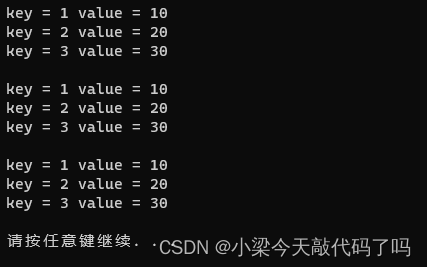
map大小和交换
size(); //返回容器中元素的数目
empty(); //判断容器是否为空
swap(st); //交换两个集合容器示例:
//大小
void test01()
{
map<int, int>m;
m.insert(pair<int, int>(1, 10));
m.insert(pair<int, int>(2, 20));
m.insert(pair<int, int>(3, 30));
if (m.empty())
{
cout << "m为空" << endl;
}
else
{
cout << "m不为空" << endl;
cout << "m的大小为: " << m.size() << endl;
}
}
//交换
void test02()
{
map<int, int>m;
m.insert(pair<int, int>(1, 10));
m.insert(pair<int, int>(2, 20));
m.insert(pair<int, int>(3, 30));
map<int, int>m2;
m2.insert(pair<int, int>(4, 100));
m2.insert(pair<int, int>(5, 200));
m2.insert(pair<int, int>(6, 300));
cout << "交换前" << endl;
printMap(m);
printMap(m2);
cout << "交换后" << endl;
m.swap(m2);
printMap(m);
printMap(m2);
}运行结果:
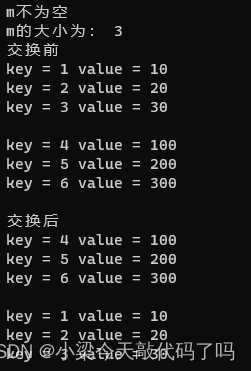
map插入和删除
insert(elem); //在容器中插入元素。
clear(); //清除所有元素
erase(pos); //删除pos迭代器所指的元素,返回下一个元素的迭代器。
erase(beg, end); //删除区间[beg,end)的所有元素 ,返回下一个元素的迭代器。
erase(key); //删除容器中值为key的元素。示例:
void test01()
{
//插入
map<int, int> m;
//第一种插入方式
m.insert(pair<int, int>(1, 10));
//第二种插入方式
m.insert(make_pair(2, 20));
//第三种插入方式
m.insert(map<int, int>::value_type(3, 30));
//第四种插入方式
m[4] = 40;
printMap(m);
//删除
m.erase(m.begin());
printMap(m);
m.erase(3);
printMap(m);
//清空
m.erase(m.begin(),m.end());
m.clear();
printMap(m);
}运行结果:
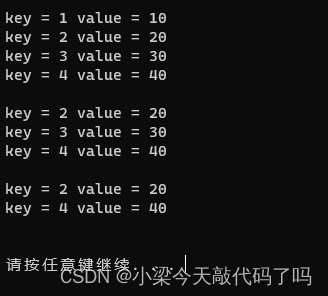
map查找和统计
find(key); //查找key是否存在,若存在,返回该键的元素的迭代器;若不存在,返回set.end();
count(key); //统计key的元素个数示例:
//查找和统计
void test01()
{
map<int, int>m;
m.insert(pair<int, int>(1, 10));
m.insert(pair<int, int>(2, 20));
m.insert(pair<int, int>(3, 30));
//查找
map<int, int>::iterator pos = m.find(3);
if (pos != m.end())
{
cout << "找到了元素 key = " << (*pos).first << " value = " << (*pos).second << endl;
}
else
{
cout << "未找到元素" << endl;
}
//统计
int num = m.count(3);
cout << "num = " << num << endl;
}运行结果:

map容器排序
利用仿函数,可以改变排序规则
示例(从大到小排序):
class MyCompare {
public:
bool operator()(int v1, int v2)const {
return v1 > v2;
}
};
void test01()
{
//默认从小到大排序
//利用仿函数实现从大到小排序
map<int, int, MyCompare> m;
m.insert(make_pair(1, 10));
m.insert(make_pair(2, 20));
m.insert(make_pair(3, 30));
m.insert(make_pair(4, 40));
m.insert(make_pair(5, 50));
for (map<int, int, MyCompare>::iterator it = m.begin(); it != m.end(); it++) {
cout << "key:" << it->first << " value:" << it->second << endl;
}
}运行结果:
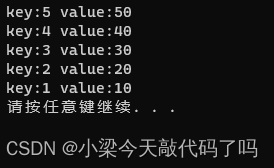
至此,STL常见容器,就介绍完了,我们对C++中STL容器中的常见容器以及其基本操作,有了一个大致的了解。
STL其他容器链接:
STL-set容器_小梁今天敲代码了吗的博客-CSDN博客
STL-list容器_小梁今天敲代码了吗的博客-CSDN博客
STL-deque容器_小梁今天敲代码了吗的博客-CSDN博客
STL-stack容器和queue容器_小梁今天敲代码了吗的博客-CSDN博客
STL-Vector容器_小梁今天敲代码了吗的博客-CSDN博客
